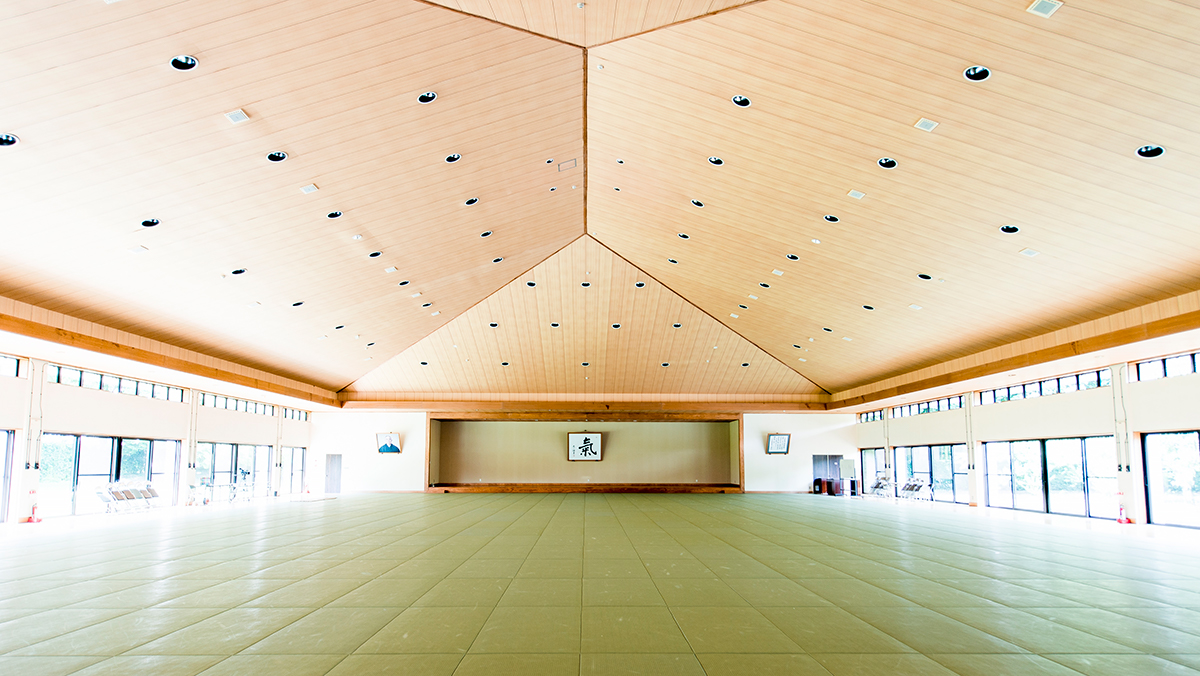I was officially asked by the Los Angeles Dodgers to teach “Ki“ to their top prospects at a local camp for three years starting from 2010.
The Dodgers scout young baseball talent from all over the world, and these are the top-level players for which the team has the highest expectations
As I watched their practice day to day, I noticed one thing in common. It was that each movement was done very easily.
Whether it was throwing or hitting, it seemed so easy that even an amateur like me had the misconception that I could do it too! Of course, this was not the case. There was nothing showy in their unwasted motion. In these actions, they looked so natural and calm.
In terms of expression and staging, perhaps there is something to be made for ”showiness”, but I learned from this experience with professional athletes that true motion is the opposite.
One day I was visiting Yellowstone National Park in the USA.
As I drove along the river, there were “Danger!” warnings on the side of the river. But the flow of the river seemed so calm that it didn’t seem dangerous at all.
I soon realized what the danger warnings meant. After driving down the road a bit further, I came to a huge waterfall.
At first glance the water flow seemed quite calm. But from the waterfall, I saw that actually the current was very powerful, and the warnings meant that if someone was caught in it, they would not survive.
Waves and splashes on a river may look powerful, but they are not necessarily. They exist not because of a dangerous current, but simply because the riverbed is shallow or rocky.
This is one example that a seemingly calm state can be very powerful, and we cannot judge by appearances only.
There is a piano piece by Franz Liszt called the ” Transcendental Études”.
It is a piece of piano music that requires a great deal of skill to perform. At the level of the average piano student, it is not easy to follow the music score. If the technique is lacking, it won’t become music, and if technique only is pursued, the piece will be flashy and restless.
When played by a true pianist, the music sounds beautifully harmonious and calm, despite the frightening number of notes.
One such example is this ” Transcendental Études ” performed by Kemal Gekic.
It is interesting to note that Franz Liszt, who was a master of technique, studied under Karl Czerny, who was famous for basic education.
I believe that technique is the result of fundamental trainings, and that in the process of eliminating excesses and waste, a sense of “calmness” is achieved.
“Calmness” and “slowness” may seem close in meaning, but not the same thing. It is wrong to expect calmness from the beginning. It would only be boring slowness.
Performing the techniques of Shinshin Toitsu Aikido offers a similar example.
A showy motion has unreasonableness and wastefulness. When these unnecessary movements are chipped away, the largeness of your movement reveals a great calmness.
In our Shinshin Toitsu Aikido training we also use Bokken, the wooden swords, and Jo, the wooden sticks. The same applies to swords and sticks, the more natural the motion, the calmer it becomes.
A motion which has calmness, actually has huge. On the contrary, a restless motion has no power. And slowness of motion, in itself, has no power at all.
“Calmness” is very interesting.
In your daily practice, if you look at your own and other people’s motion from this point of view you may find something new.
By the way, Mr. Takeo Hori, is the embodiment of “calmness”.
[Shinshin Toitsu Aikido・Ki Society official YouTube channel video/interview with Mr. Takeo Hori]

translate: Moe Mimori
Edited by: C. Curtis
Hawaii Ki Federation
https://www.hawaiikifederation.org/

